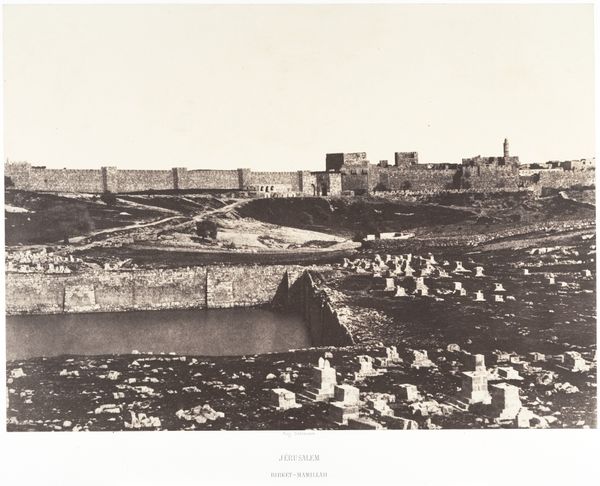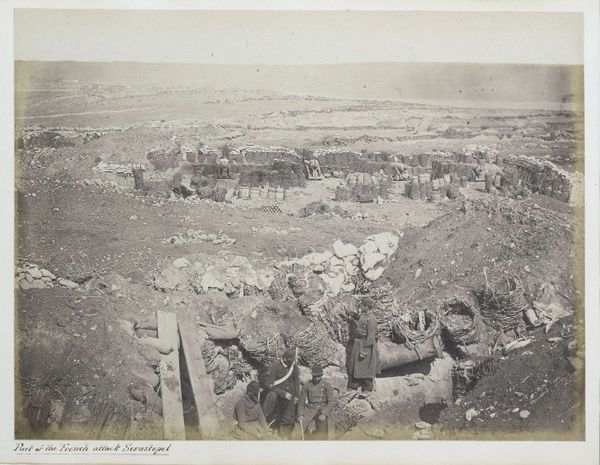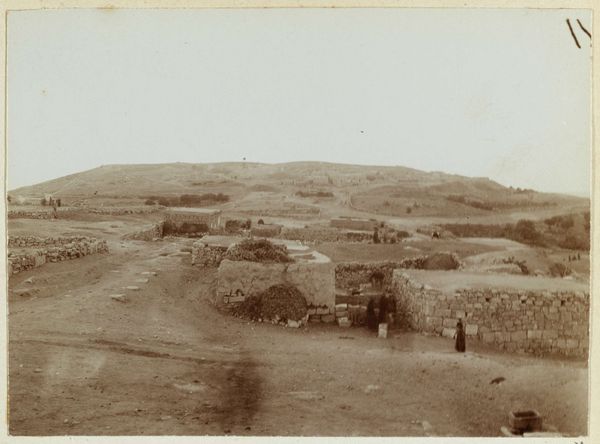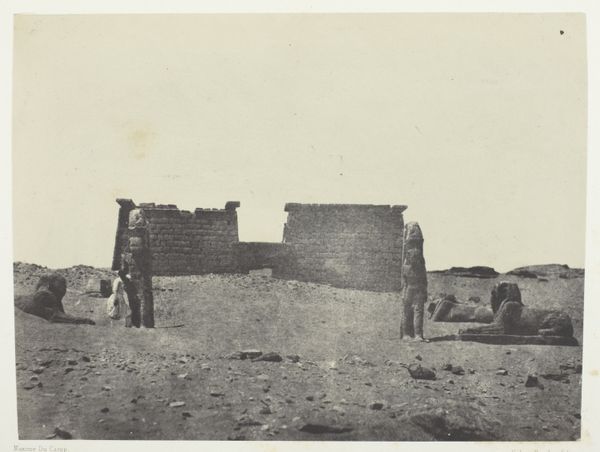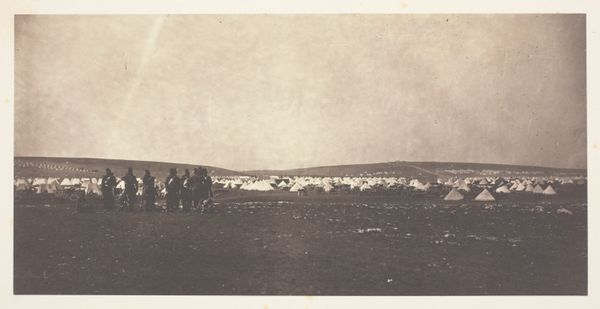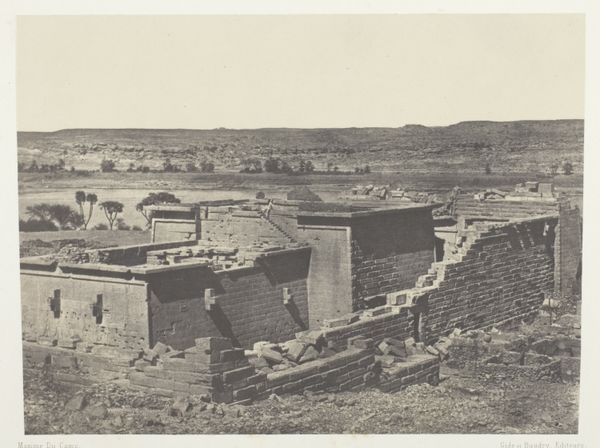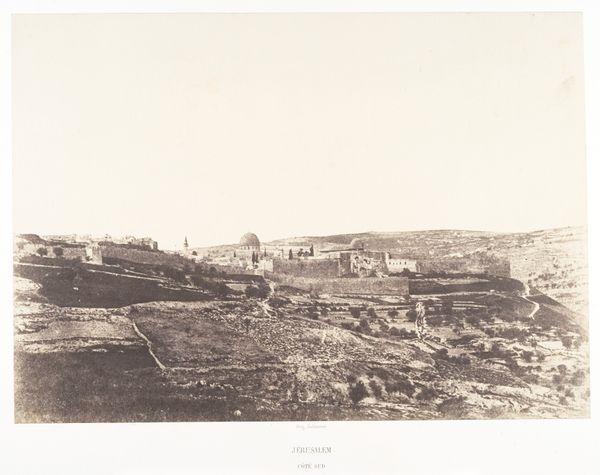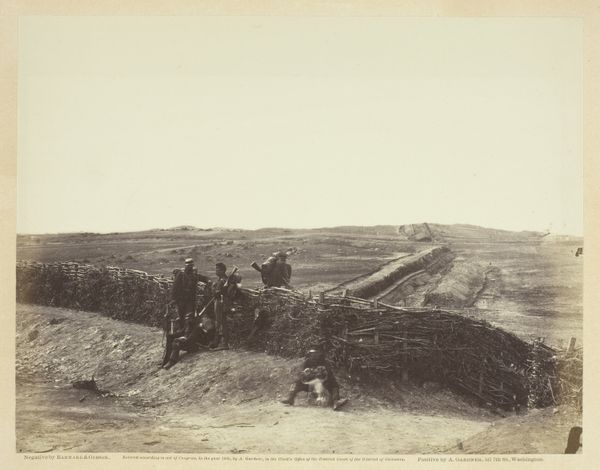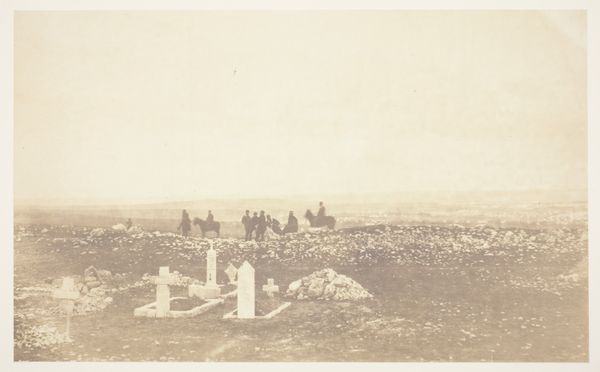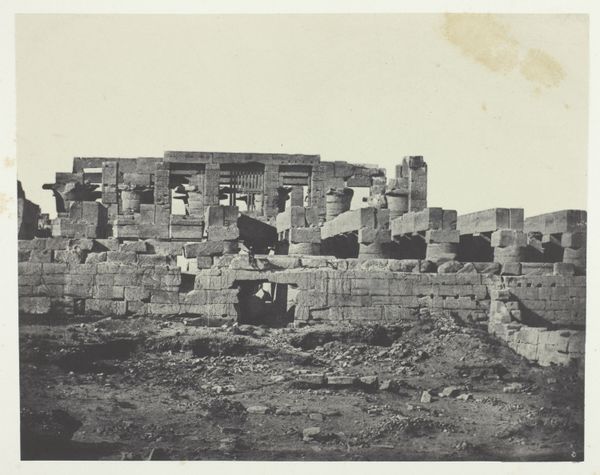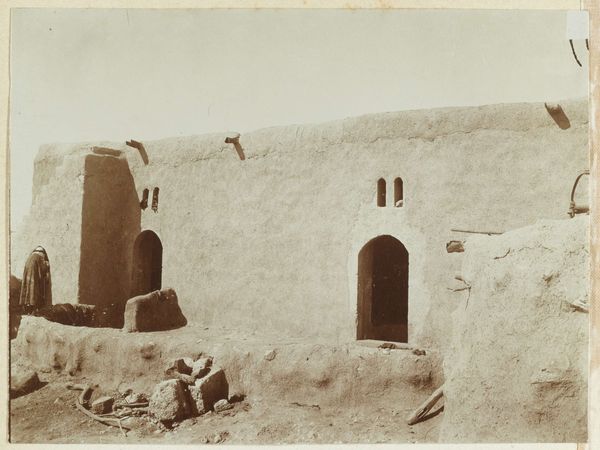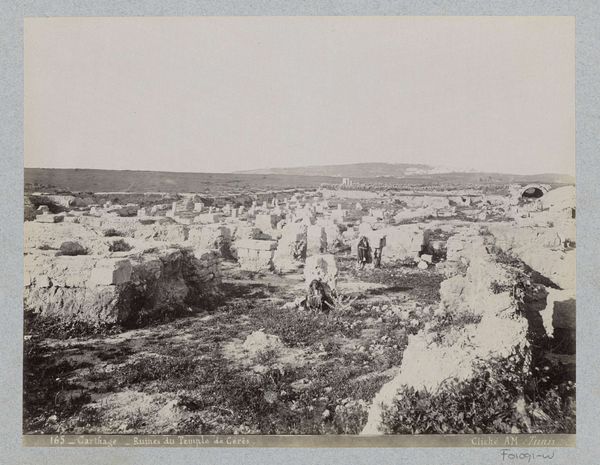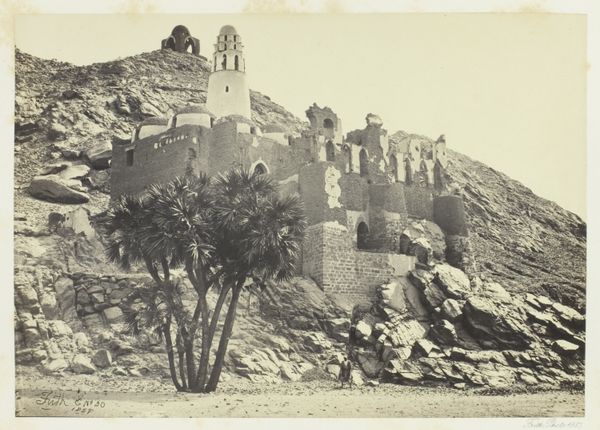
Mortar Batteries in front of Picquet House, Light Division 1855
0:00
0:00
print, paper, photography, gelatin-silver-print
#
16_19th-century
# print
#
war
#
landscape
#
paper
#
archive photography
#
photography
#
england
#
gelatin-silver-print
Dimensions: 22.6 × 34.8 cm (image/paper); 40.4 × 53.2 cm (mount)
Copyright: Public Domain
Curator: This gelatin silver print, taken by Roger Fenton in 1855, is titled "Mortar Batteries in front of Picquet House, Light Division". I’m struck immediately by the scene’s quiet desolation, despite depicting instruments of war. Editor: Quiet but monumental. It’s the sheer density of those cannons and the fortifications that gets me. You can almost feel the weight of them, both physically and as symbols of power and imperial ambition. And the stark contrast of textures, between the earthworks and the smooth metal, is just phenomenal. Curator: Exactly, consider the immense labor that went into creating those earthworks, the digging and the hauling. Fenton was one of the first to photograph war, commissioned to document the Crimean War, and this work avoids graphic images of bloodshed but it quietly reveals the scale and material cost of conflict. The repetitive forms of the sandbags almost speak to a factory of war. Editor: Right, the repetition is key. There's a brutal sameness in those defenses and rows of cannonballs – reflecting the de-individualizing machinery of war itself. What are your thoughts on its display given Fenton’s commissions? Are the processes in the image also mirroring the mechanisms of imperialism at play? Curator: A powerful connection! Fenton presented the modern spectacle of war. His photographic choices highlight how image making could support power. His work then can be connected to current news photography; examining the who, how, and why images of conflict are made becomes paramount. Editor: So true. And in examining the production of this particular image, and its intended purpose as a somewhat sanitized view of war, we can deconstruct the ways conflict is often packaged and consumed, then and now. This single image has so much material, metaphorical, and political weight to unpack. Curator: Absolutely. By considering its context, its making, and its visual language, we find unexpected connections to current narratives. It offers important reflection. Editor: Agreed. It’s an image that continues to challenge and provoke, making its presence here truly invaluable.
Comments
No comments
Be the first to comment and join the conversation on the ultimate creative platform.
